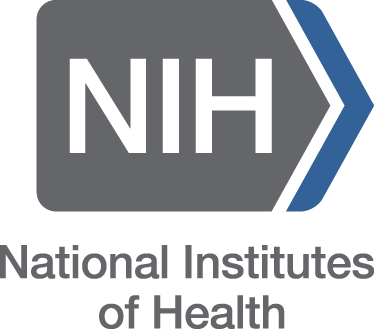Complementary and Integrative Medicine
Many Americans use medical treatments that are not part of mainstream medicine. When you are using these types of therapy, it may be called complementary, integrative, or alternative medicine.
Complementary medicine is used together with mainstream medical care. An example is using acupuncture to help with side effects of cancer treatment. When health care providers and facilities offer both types of care, it is called integrative medicine. Alternative medicine is used instead of mainstream medical care.
(From Complementary, Alternative, or Integrative Health: What’s In a Name? | NCCIH)
We are focusing on complementary health approaches, including resources to help with talking with your doctor, learning about research, and choosing practitioners.
Complementary approaches can be classified by their primary therapeutic input (how the therapy is taken in or delivered), which may be:
- Nutritional (e.g., special diets, dietary supplements, herbs, and probiotics)
- Psychological (e.g., mindfulness)
- Physical (e.g., massage, spinal manipulation)
- Combinations such as psychological and physical (e.g., yoga, tai chi, acupuncture, dance or art therapies) or psychological and nutritional (e.g., mindful eating)”
 Discover MedlinePlus
Discover MedlinePlus
MedlinePlus is a service of the National Library of Medicine, the largest biomedical library in the world. Use MedlinePlus.gov anywhere, anytime, on any device - for free - to discover high-quality health and wellness information that is reliable, easy to understand, and free of advertising, in both English and Spanish.
Complementary and Integrative Medicine: MedlinePlus
Some examples of complementary health approaches are:
- Acupuncture: MedlinePlus
- Relaxation techniques for stress: MedlinePlus Medical Encyclopedia
- Yoga for health: MedlinePlus Medical Encyclopedia
- Biofeedback: MedlinePlus Medical Encyclopedia
- Non-Drug Pain Management: MedlinePlus
- Integrative medicine for cancer treatment: MedlinePlus Medical Encyclopedia
- Chronic pain - resources: MedlinePlus Medical Encyclopedia
- Drugs, Herbs and Supplements This information comes from the National Center for Complementary and Integrative Health (NCCIH) and licensed information from Natural Medicines Comprehensive Database.
Discover NIH
 The National Institutes of Health (NIH), a part of the U.S. Department of Health and Human Services, is the nation’s medical research agency — making important discoveries that improve health and save lives. NIH is made up of 27 Institutes and Centers, each with a specific research agenda, often focusing on particular diseases or body systems.
The National Institutes of Health (NIH), a part of the U.S. Department of Health and Human Services, is the nation’s medical research agency — making important discoveries that improve health and save lives. NIH is made up of 27 Institutes and Centers, each with a specific research agenda, often focusing on particular diseases or body systems.
The National Center for Complementary and Integrative Health (NCCIH) conducts and supports research and provides information about complementary health products and practices in the context of whole person health.
Want to test your knowledge about complementary health? Take the quiz now to learn about 6 commonly misunderstood words.
Know the Science as many advertisements and websites may make claims about the effectiveness of their product. The NCCIH has created a fantastic toolkit. This resource is great for learning or teaching to make sense of news stories or evaluate health information.

There are more resources in this new module finding and evaluating online resources.
Of note - Some of the resources in the toolkit start with a brief introduction. For those, follow the tabs on the left side to move through the sections of the article.
The NCCIH has tons of resources:
- Are You Considering a Complementary Health Approach?
- Cancer and Complementary Health Approaches: What You Need To Know
- Children and the Use of Complementary Health Approaches
- Chronic Pain and Complementary Health Approaches: Usefulness and Safety
- 4 Tips: Start Talking With Your Health Care Providers About Complementary Health Approaches
- 6 Things To Know When Selecting a Complementary Health Practitioner
- Herbs at a Glance
Discover More
The Food and Drug Administration (FDA) is responsible for protecting the public health by ensuring the safety, efficacy, and security of human and veterinary drugs, biological products, and medical devices; and by ensuring the safety of our nation's food supply, cosmetics, and products that emit radiation.
The claims that non-mainstream practitioners make can sound promising. However, researchers do not know how safe many of these treatments are or how well they work. Studies are underway to determine the safety and usefulness of many of these practices.

To minimize the health risks of a non-mainstream treatment:
- Discuss it with your doctor. It might have side effects or interact with other medicines.
- Find out what the research says about it
- Choose practitioners carefully
- Tell all of your doctors and practitioners about all of the different types of treatments you use
Also keep in mind that Natural Doesn't Necessarily Mean Safer, or Better | NCCIH. In fact, Mixing Medications and Dietary Supplements Can Endanger Your Health | FDA.
If something seems too good to be true, pay special attention. Learn more:
Featured Books
-
Title: We'll Prescribe You a CatPublisher Penguin Random HouseYear published 2024Book image

Terms of use: Network of the National Library of Medicine (NNLM) staff offer these health discussion resources for educational use. The materials included do not necessarily reflect the views or opinions of the author, publisher, or the sponsoring agencies of the National Library of Medicine (NLM) and the National Institutes of Health (NIH).

